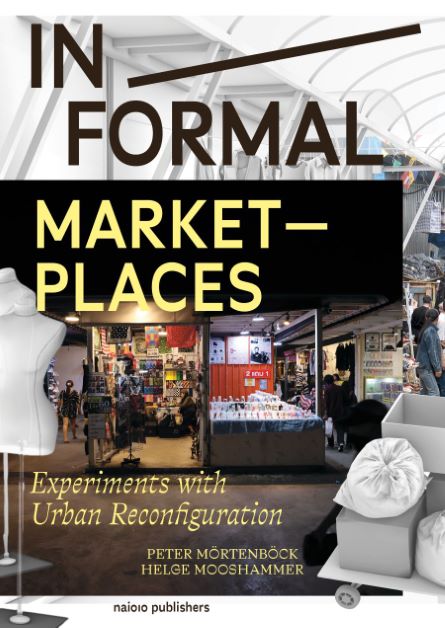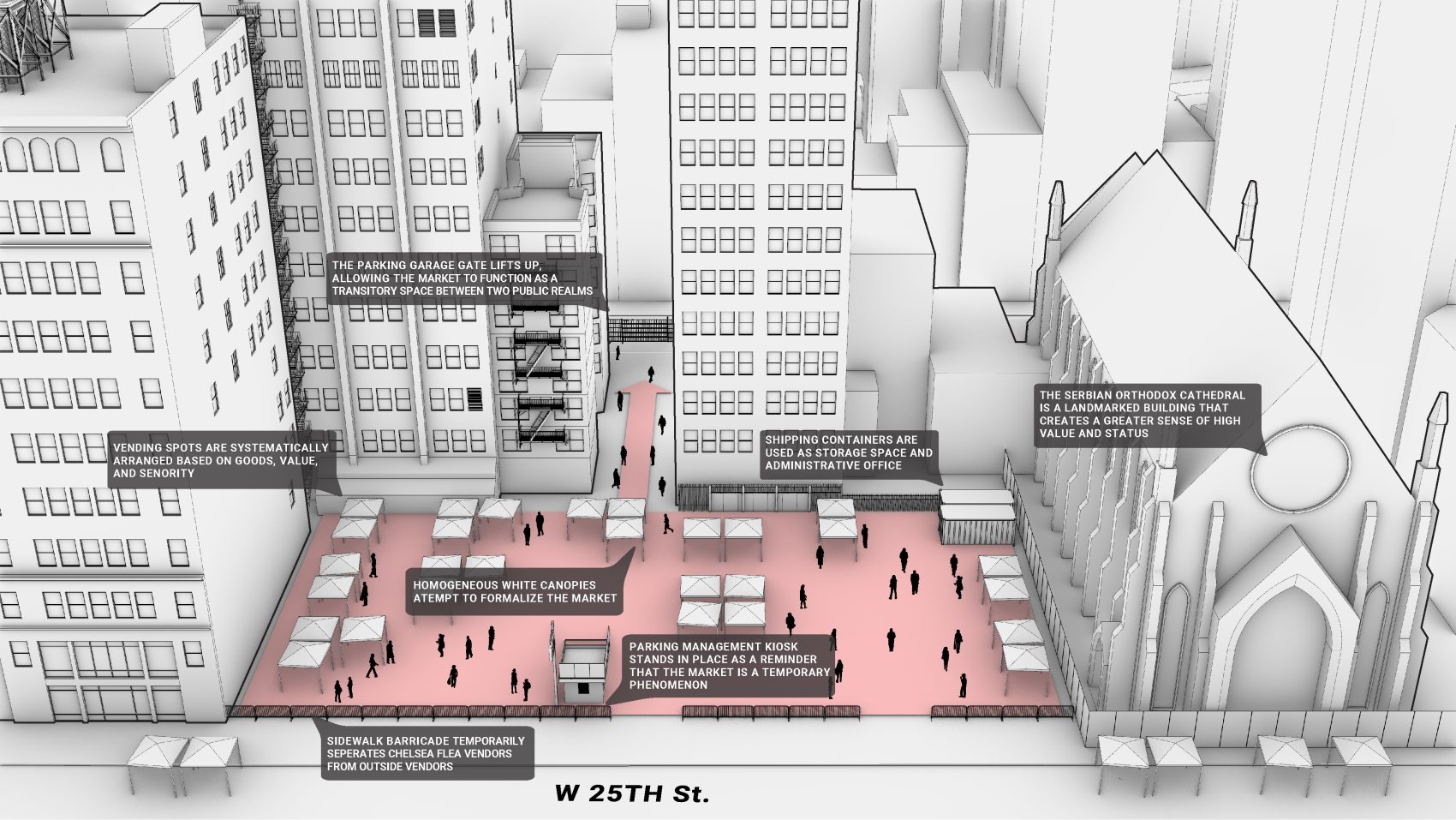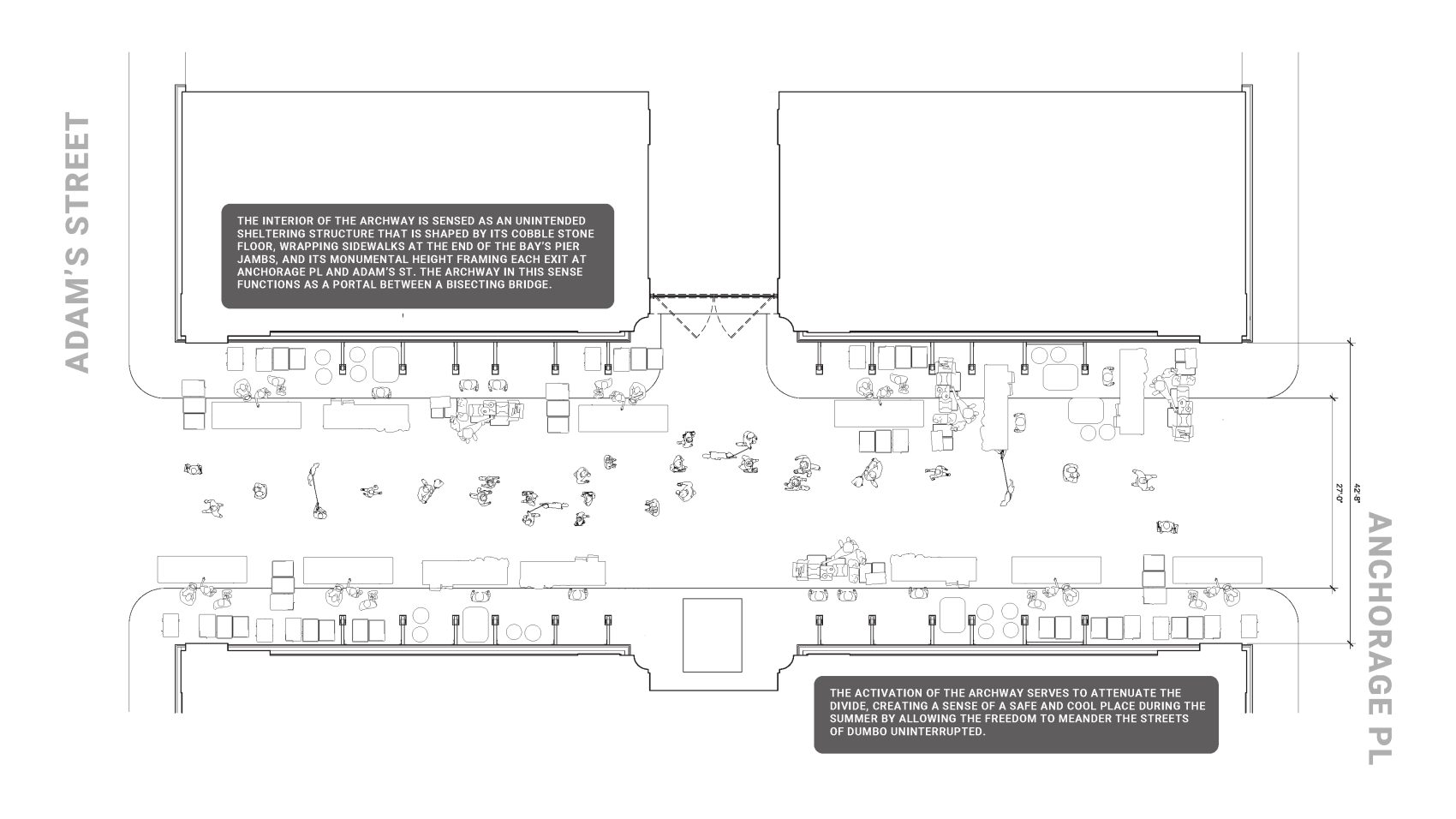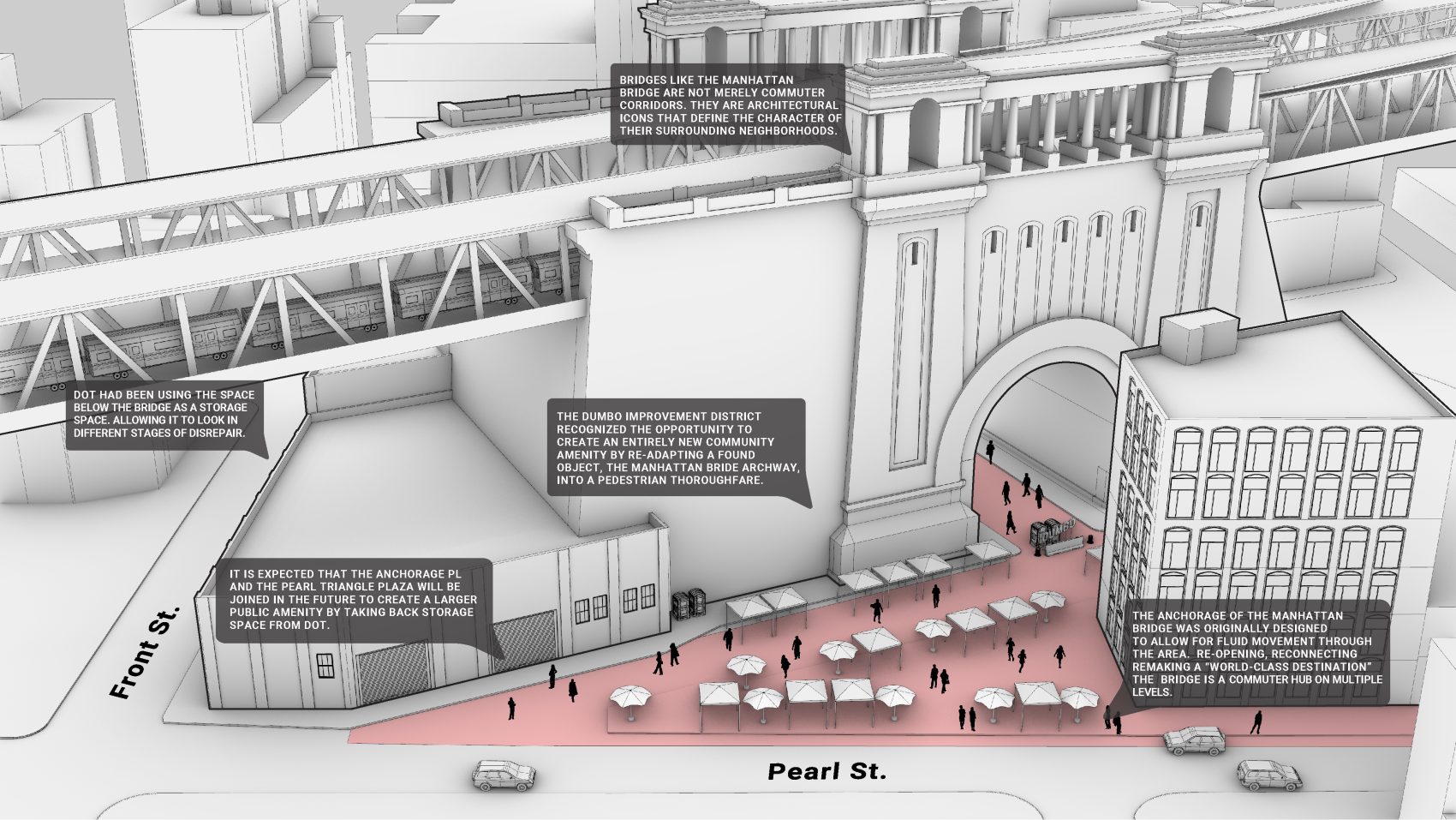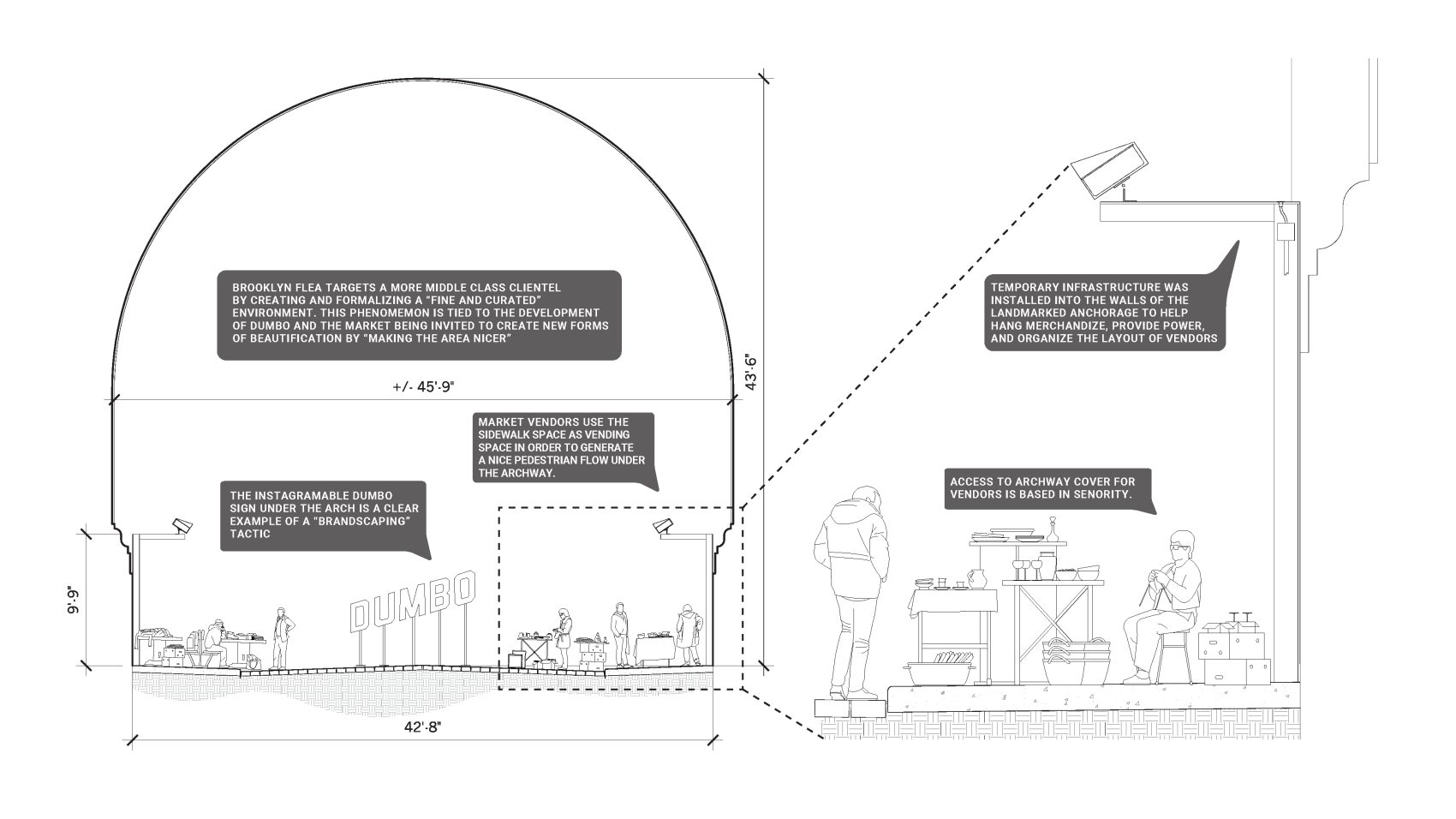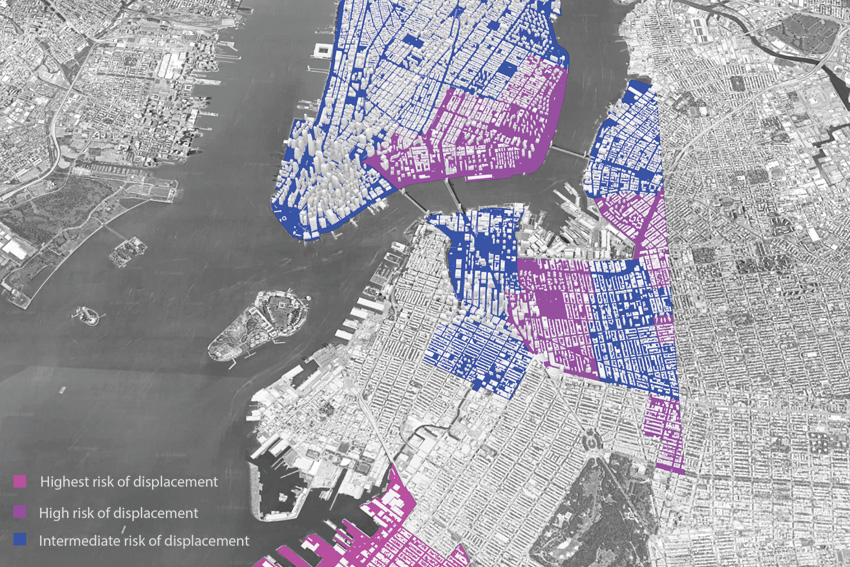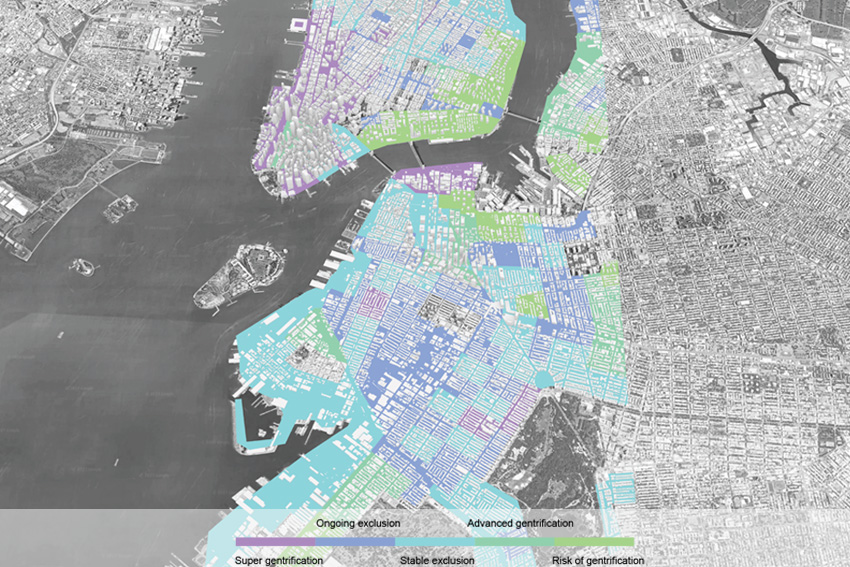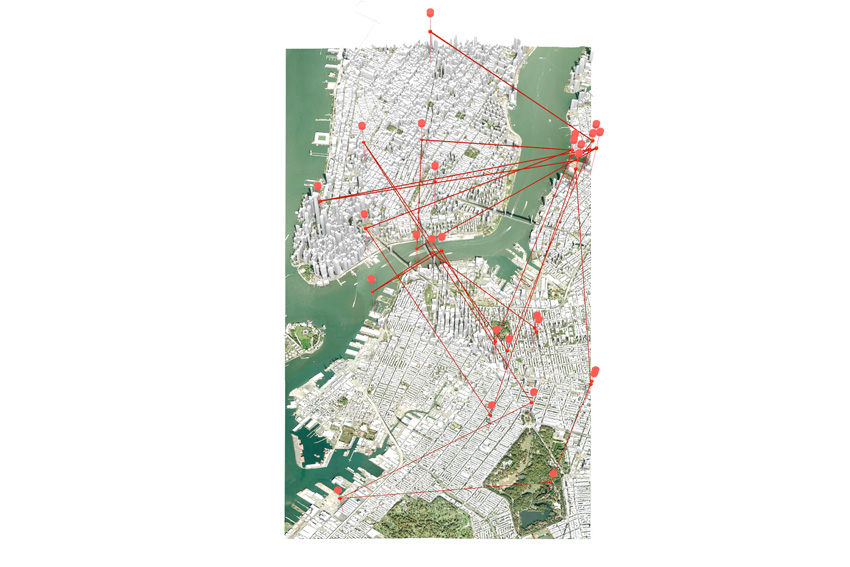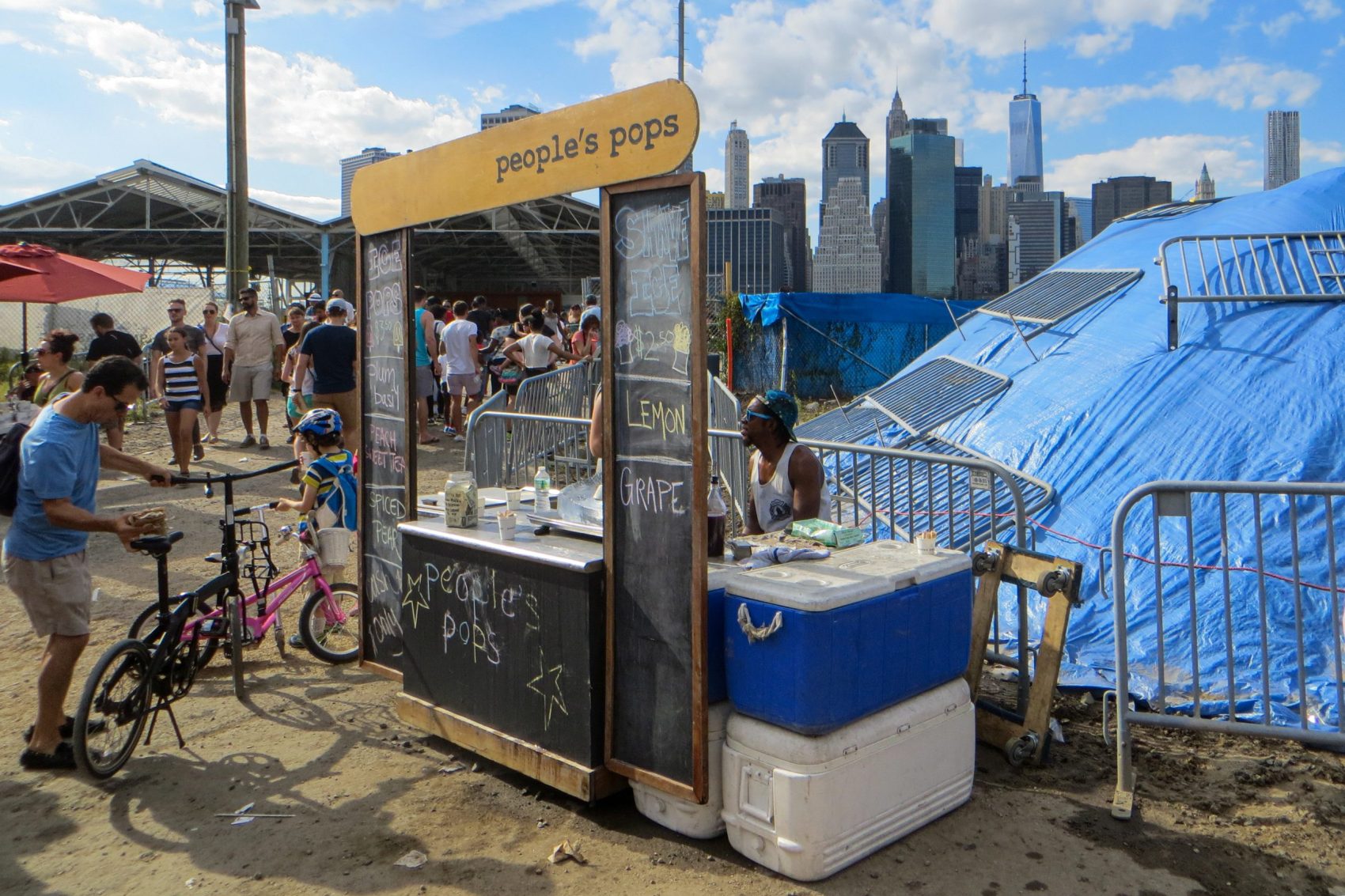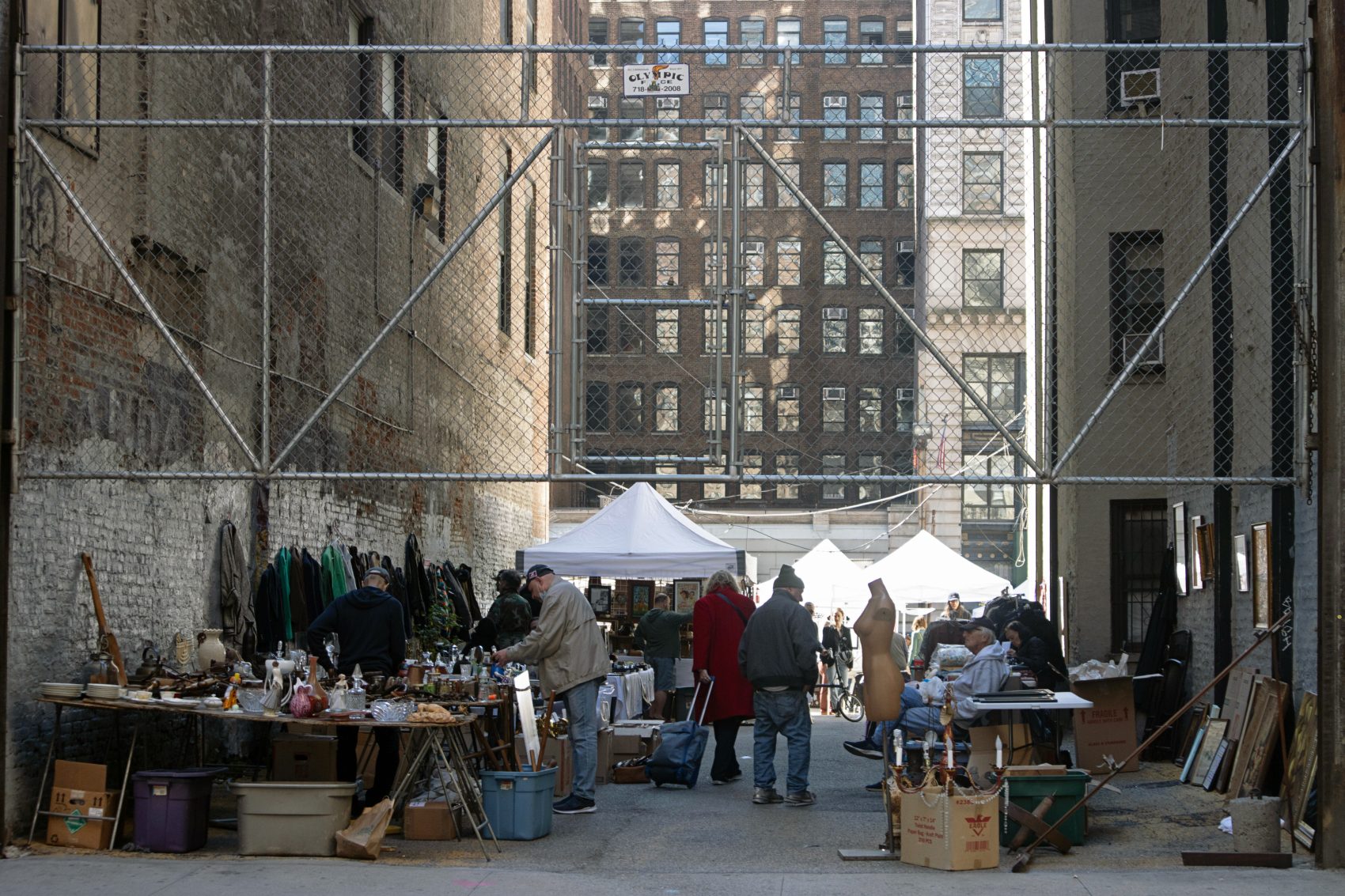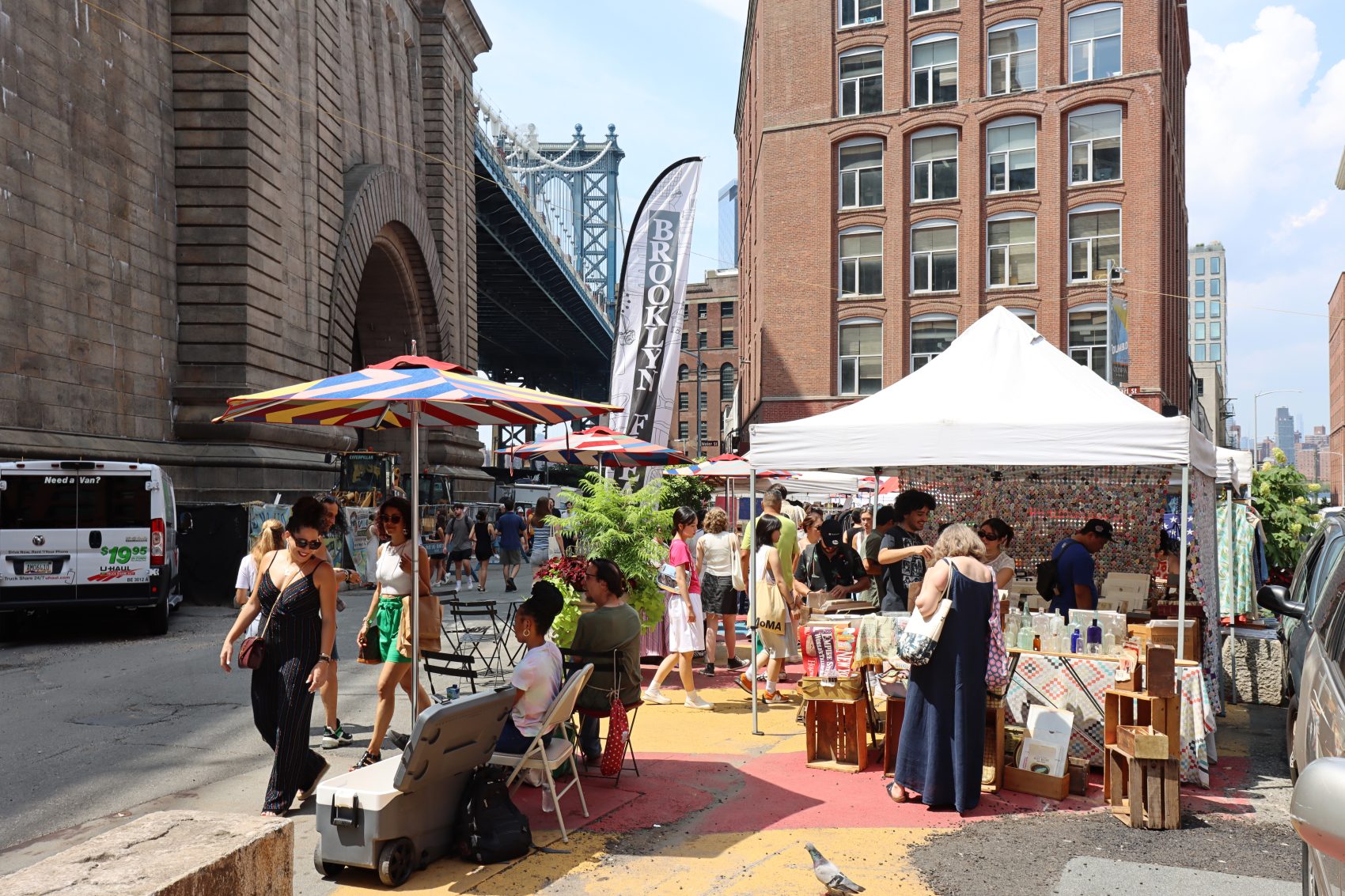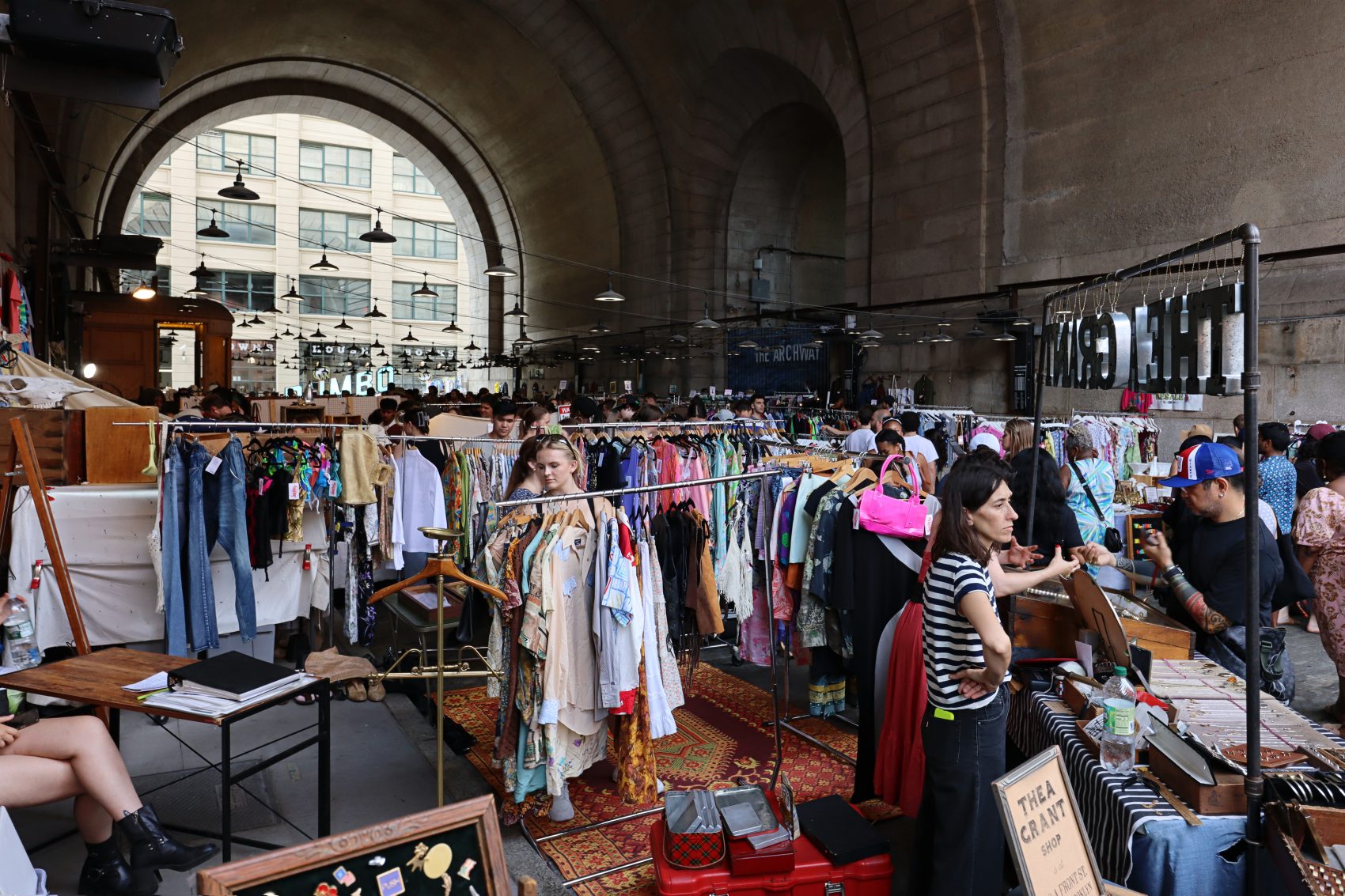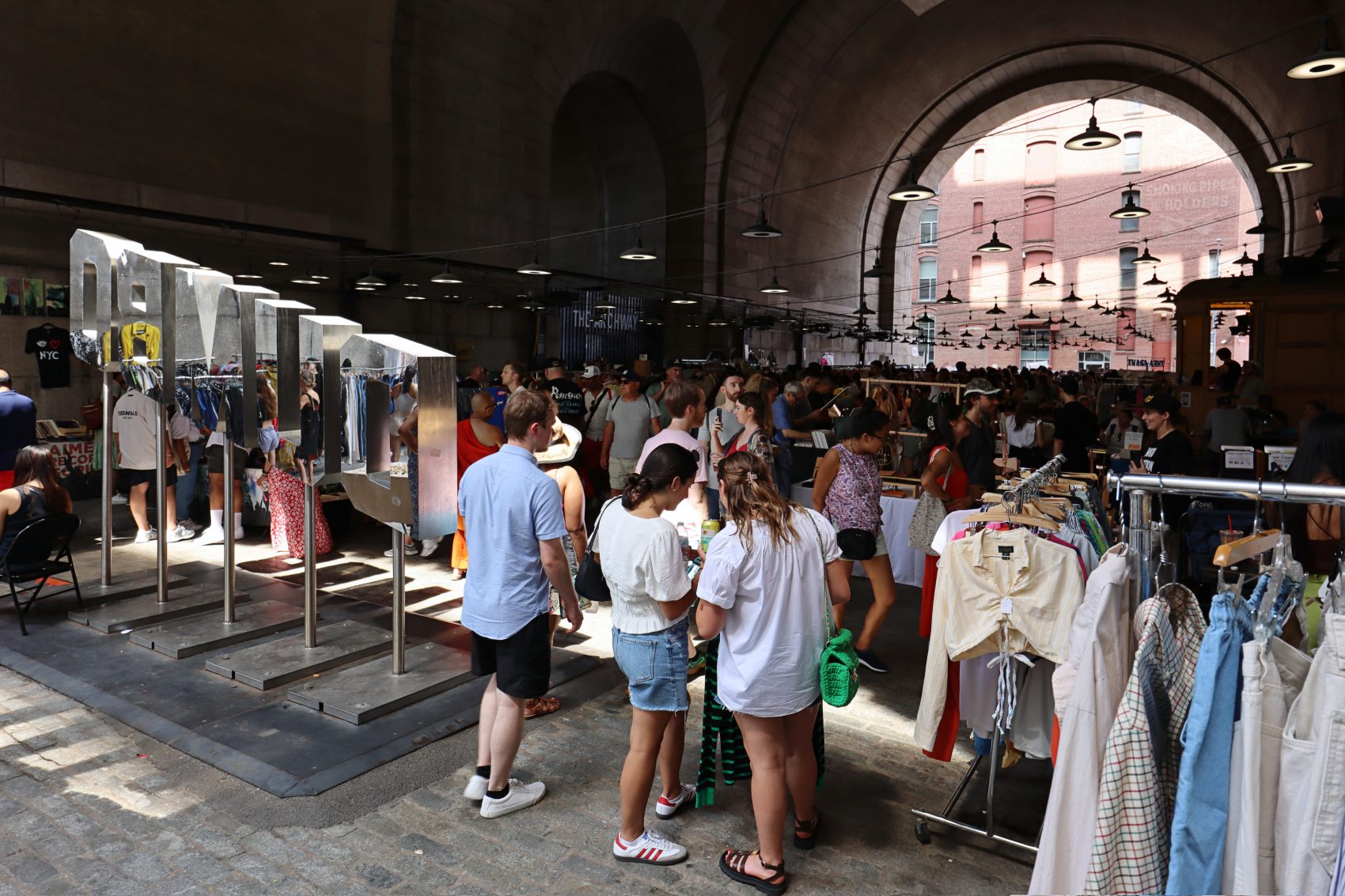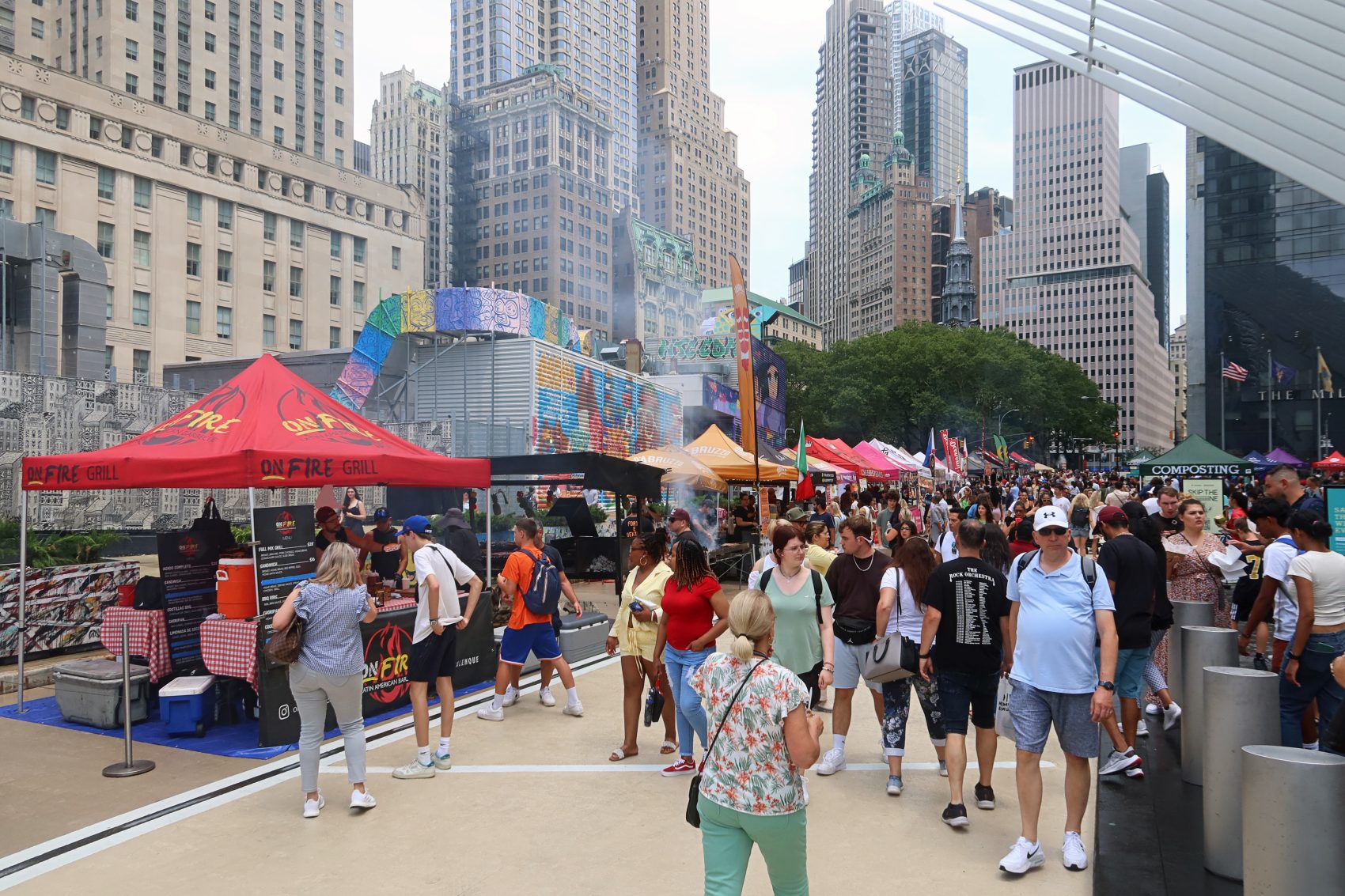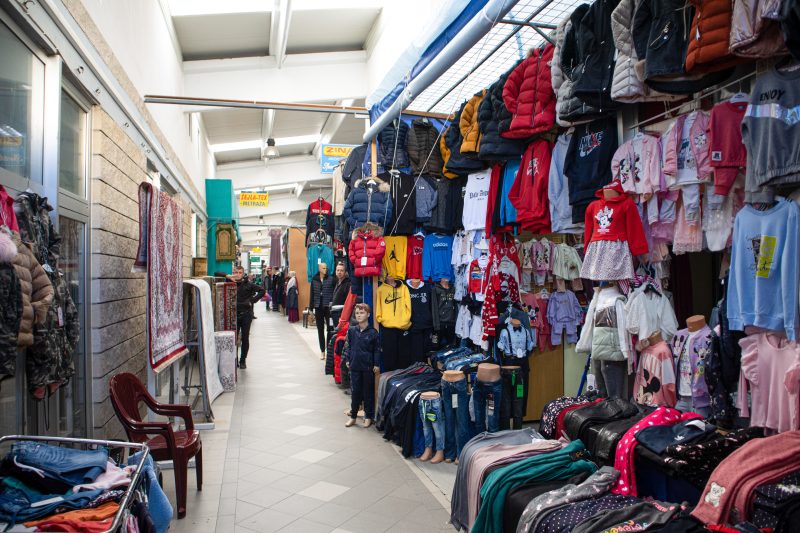- Appropriation
- FWF
- 2018-2023
- Incorporating Informality
CASE STUDY: BROOKLYN FLEA
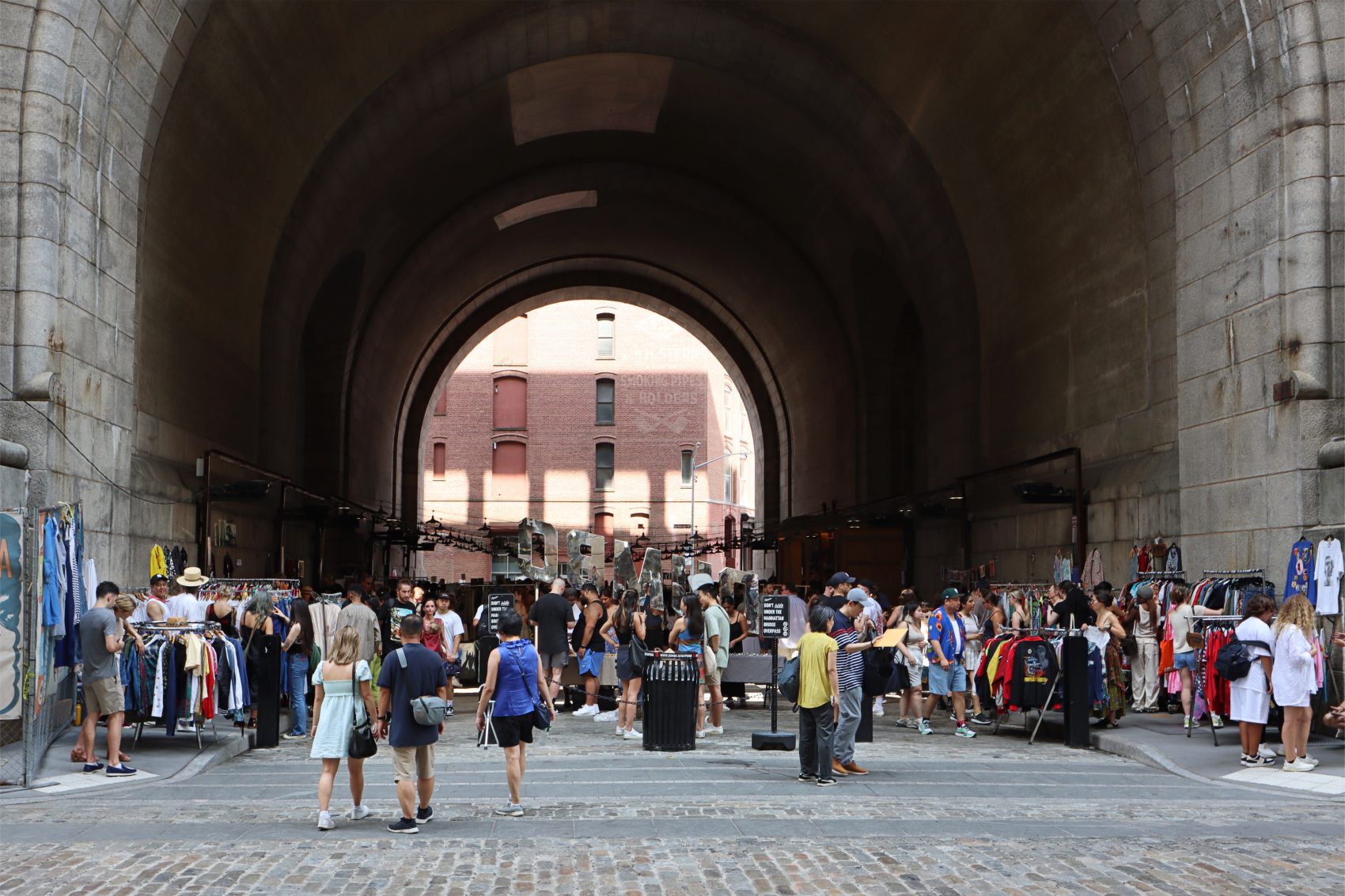
Brooklyn Flea, Dumbo, New York, 2023
THE ‘BETWEEN’ OF URBAN FINANCIALISATION IN NEW YORK
The financialisation of space turns the city and its activities into a playground for the speculation of future increased rents. The repercussions of these policy frameworks are significant for some, but not all, as those who do not fit the curated remit are pushed further into the periphery.
The question becomes whether these tools or indicators could be re-appropriated to challenge the policy frameworks from which they emerge: frameworks built in and through displacement and mediated access. How could these counter-tools be designed, proliferated, and instrumentalised? Importantly, whose interests would they serve?
Brooklyn Flea LLC, founded in 2008, is one of the largest market operators on the east coast of the United States, coordinating markets across the New York City boroughs as well as in Jersey City, Philadelphia, Los Angeles, Miami, Toronto, Osaka, Japan and Sao Paolo, Brazil. Each iteration of Brooklyn Flea is different but shares some fundamental similarities: They are curated and selective, they are designed to appear as spontaneous organism from from its respective and the ‘value’ they generate is related to forms of symbolic and cultural capital generated by the neighbourhoods in which they are nestled.
Brooklyn Flea describes itself as providing artisanal, ‘authentic,’ and cultural goods. Vendors are advertised as local and independent, selling items ranging from vintage t-shirts and artisanal soaps to analogue cameras. Smorgasburg offers local, ‘authentic’ cuisines, with branded typographies, banners and scannable QR codes for each vendor’s website or Instagram page. Each market location provides a theatrical, aestheticised experience for consumption, not only of foods or curated goods but consumption of the city as an experience.
In analysing the four instalments of Brooklyn Flea in New York City at the time of fieldwork in October 2022, each location at this time is either directly next to, or extremely close to monument-like buildings or structures. The monuments are relatively spectacular, facilitating photographability of the market site, consumer presence, and in the case of Dumbo, convenient coverage for rain or snow. These buildings allow the experience of the space to adapt to different forms. An influencer may linger in Brooklyn Flea not only to buy a vintage t-shirt, but to see and photograph the overall site as a spectacle.
Location(s): New York City, USA
On-Site Collaborator:CARMEN LAEL HINES
Visualisations:
PEDRO CRUZ CRUZ
BILAL ALAME
LOVRO KONCAR-GAMULIN
JOANNA ZABIELSKA
Photography: PETER MÖRTENBÖCK
HELGE MOOSHAMMER
CARMEN LAEL HINES
Results of this case study were published in:
In the case of Dumbo, the positioning of the market under the archway allows for the use of infrastructure as architecture. The archway creates a ‘natural’ architecture, which demarcates the market from its surroundings while facilitating fluid barriers for market extension. The public plaza extending beyond the archway, which is set to be expanded further, encourages the growth of the market, vis-a-vis the potential for more vendors, more space for booths, and more space for visitors to linger. Its positioning at the foot of the Manhattan and Brooklyn Bridges makes it an ideal site for commodity transport from other parts of New York City. Indeed, it is a public plaza meets infrastructural niche, an urban spatial configuration that in its peculiarity, becomes ideal for the hybridity of Brooklyn Flea.
Brandification, as a device, is also apparent when spatially analysing the Brooklyn Flea in Dumbo. Each of the stalls, again, functions as a kind of showroom with a very tailored aesthetic presentation complete with curated fonts, business cards, and in some cases, clothes or products from one particular time in history or focusing on one particular object (carpets, moccasins, denim jackets, vintage concert shirts). From someone selling vintage postcards and New York magazine covers, to a person selling paintings of hipster bicycles as house décor, adjacent to a terrarium vendor, next to a couple selling accessories from sourced metals used during times of war – indeed, it is the curation of independence structured to form the circular whole. Walking through the Dumbo Brooklyn Flea feels like moving through a three-dimensionalised Instagram or Pinterest feed. Each section of space is another sensorial ‘experience’ of the vendor as brand – which amalgamates to form the circuit of Brooklyn Flea, an experience of the bringing-together of ‘indie’ consumerism. In the words of Pedro Cruz, ‘Brooklyn Flea is where the brick-and-mortar business becomes mobile.’ The ‘brandification’ is the structure, or architecture, which allows for this mobility, because it is the feature that distinguishes the vendors from one another. This indicating feature is further extended b the fact that in front of each stall, there is a sign which links to the social media channels of each vendor – the ‘doorway’ to their shop, which, again, is structured through brand.
Indeed, Brooklyn Flea is not a spontaneously organised market. It is a market operator, linking the informality associated with flea-market activities to the private interests surrounding those activities. Intimately linked with city planners, Brooklyn Flea is one of the many spatial products of neoliberal economic policy models accelerated by the Bloomberg administration in the first decade of the 2000s – which rendered the city as enterprise. Brooklyn Flea is a petri dish, an informal/formal linkage between the circuits of small-scale cultural production – and the structures that rely on these ‘productive activities’ to speculate future profits from space.
Brooklyn Flea’s market features indicate the ways in which hipster markets function as devices for marketisation of the urban. Indeed, Brooklyn Flea’s market features, from its architecture, operational logics, aesthetics and typologies, indicate the varied ways value is produced in an urban-political economy shaped by speculation. The many components of Brooklyn Flea amalgamate to perform, form and produce an urban fabric of mass individuation, speculation, and digitisation. These components can be charted as indicators of the processes behind real-estate speculation in New York City over the past decades. Spatializations of policy in New York City, including zoning changes, BIDS, brandification, and capitalisation of culture are indicated through market dimensions, from the architecture of the market themselves, their logistical fabrics, linkage with the digital, and finally, their aesthetics and merchandise.
CONTRIBUTOR(S)
Carmen Lael Hines is a writer, researcher and curator particularly interested in tech, bodies, and the implications of their entanglements.
